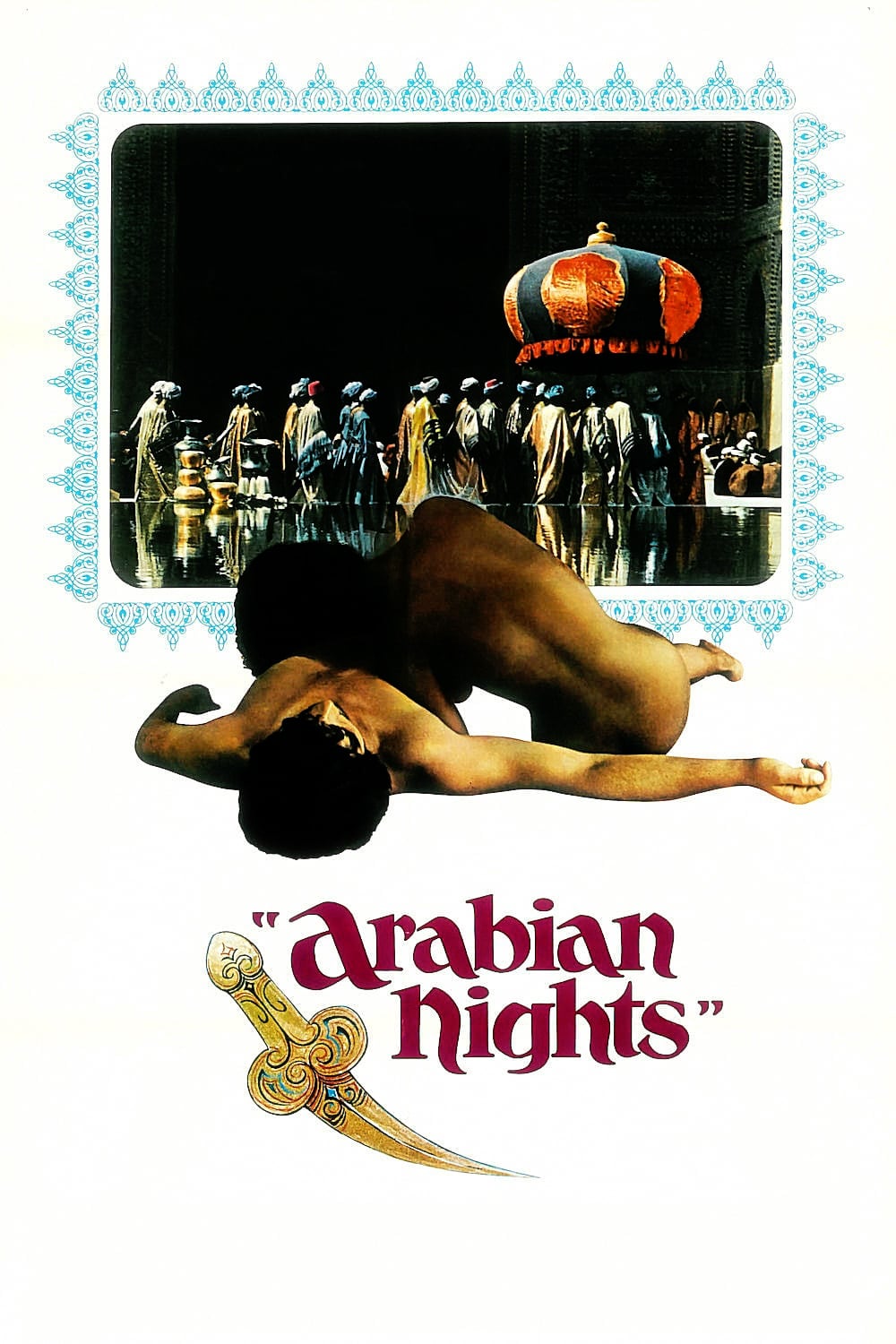
The final part of Pasolini's Trilogy of Life series is rich with exotic tales of slaves and kings, potions, betrayals, demons and, most of all, love and lovemaking in all its myriad forms. Mysterious and liberating, this is an exquisitely dreamlike and adult interpretation of the original folk tales.
01 May Arabian Nights (1974)
The Story of the Story
Pasolini is a wonderful, wonderful adventure. Welcoming him into your heart is not without cost; he’s a friend who is brilliant on one side and captive to banality on the other.
The bad? Well, its tolerable for me because it is so flamboyantly obvious. The man has a triple curse: he is outrageously gay, he is insufferably Italian and (perhaps because of these two) he has excessively simpleminded storytelling skills. The stories here in their individual content have juvenile dynamics. The way the emotions are handled is comically simpleminded.
That’s in the nature of the stories of course, but our man here takes them seriously, so overlain on this is his own sexual nature. These stories are, some of them, erotic in nature and all of them have desire as the driver. Among the various stories, he’s chosen these and that’s fine enough. The original stories were distributed in places all over the Islamic world, a huge reach, but all of them which included sex joked about the dissonance between Islmac attitudes towards sex and the actual lives of folks within.
But its rather interesting actually watching how his own predilections enter the story. Most of the men here are slaves to their own desires. But those desires are all in the stories skipping over the most superficial of erotic notions. A teenage boy awakes and finds an unconscious teenage girl next to him. He has sex with her. This is equated to “falling in love.” It happens over and over and if you encounter these stories in text, its part of the fun.
But see how Pasolini himself enters the story in how he chooses to portray the erotic content. Nudity and youth stand for the erotic, especially the nude boy. When sex is depicted (less than you would expect from the stories) its amazing wooden, mannikins. I suppose if you made some still images of parts of this it would be erotic, but repeatedly seeing the male member of a cartoon tells me that director has the same foibles as the characters we see.
The Good? Well there’s more than enough of that to make up for the sexual inadequacies of that part of the world.
There’s the absolute beauty of the thing cinematically. It isn’t fully cinematic in motion, since Pasolini has no notion of how things flow, what the rhythms of things are. But each shot is fulfilling and some are absolutely breathtaking. He doesn’t have any static tableaux like the striking ones in “Matthew,” but the visual elegance is erotic in itself. Its a sort of continuous penis shot of life, and you’ll find the beauty of the places erotic in their own ways, And then there’s the way the stories are crafted.
Yes they are cartoonish. Yes, they have execrable pacing, almost as if they were found objects and put in inappropriate boxes. But the way they are tied one to another is nothing short of brilliant. If we had none of the beauty, and none of the amusement of watching an Italian fop struggle on screen, we’d still have this. And its great.
There isn’t any one mechanism that links the stories; there may be a dozen. There isn’t any sense to about half of them, and that’s part of the miracle. Sometimes they are inside one another, but sometimes they walk through each other. Sometimes it is the same place of extras. Sometimes a repeated situation; “don’t eat from that plate.” Sometimes it is simply a segue that has no narrative connection at all but just seems nested or siblinged in some way. Its “Sarogossa Manuscript” with fun and beauty.
I must say that one story really is perfect. It alone has two really beautiful women acting erotically. It has expert pacing. It is funny: laugh out loud funny. And it has a punishment that is one of the most arresting images you’ll see if you are a guy. Plus it has a framing story that makes me think it was the first one adapted and filmed.
Posted in 2006
Ted’s Evaluation — 3 of 3: Worth watching.


No Comments